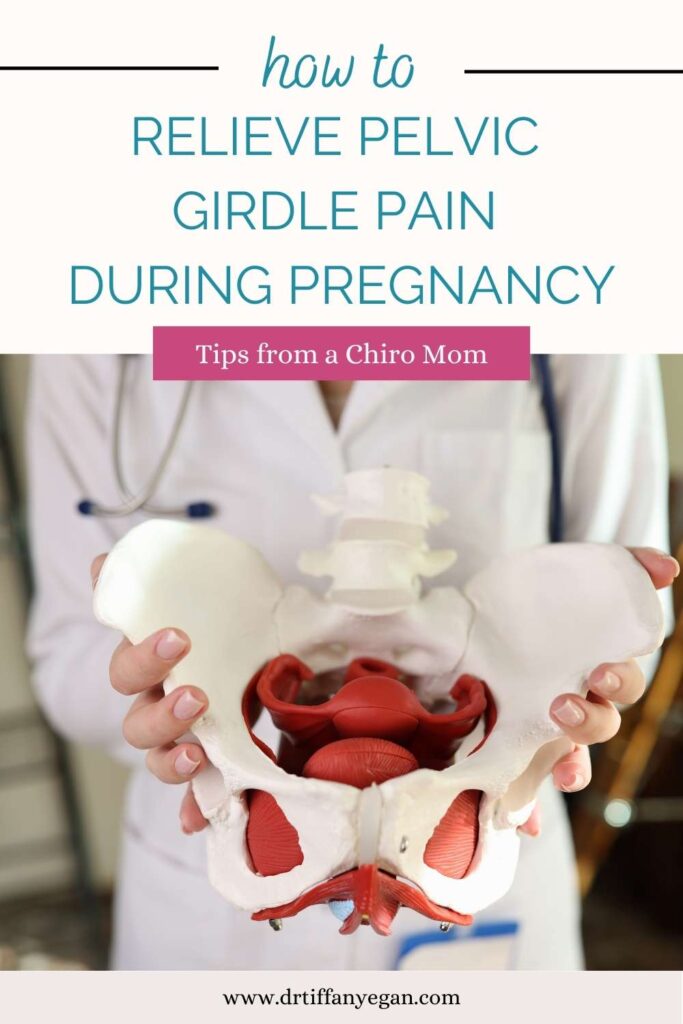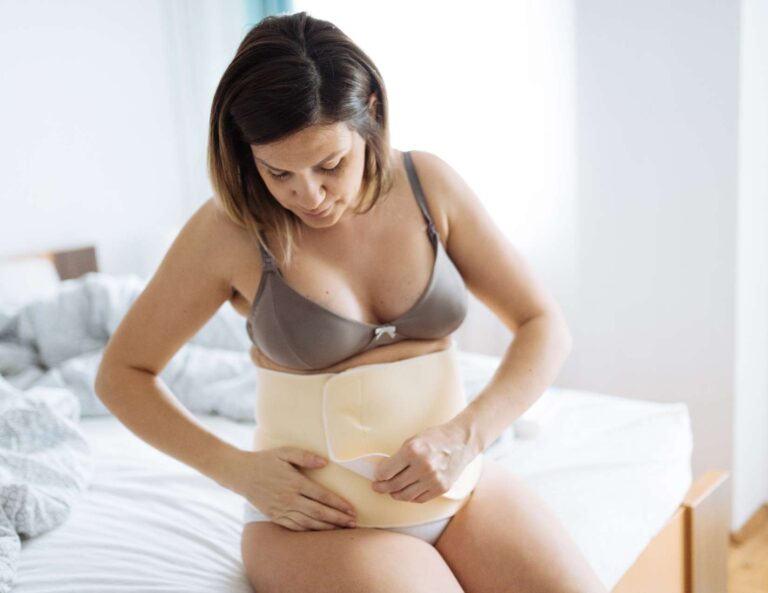The Ultimate Guide To Pelvic Girdle Pain Relief During Pregnancy
Last Updated on June 5, 2023 by Dr. Tiffany Egan
As a chiropractor and mom, I understand the pain and discomfort that comes with pregnancy. One of the most common complaints during pregnancy is pelvic girdle pain (PGP). Pelvic girdle pain, also known as symphysis pubis dysfunction (SPD), is a condition that affects up to 25% of pregnant women. It can cause immense discomfort and make daily activities such as walking, sitting, or standing unbearable. In this article, I will provide useful tips and tricks on how to relieve pelvic girdle pain relief during pregnancy.
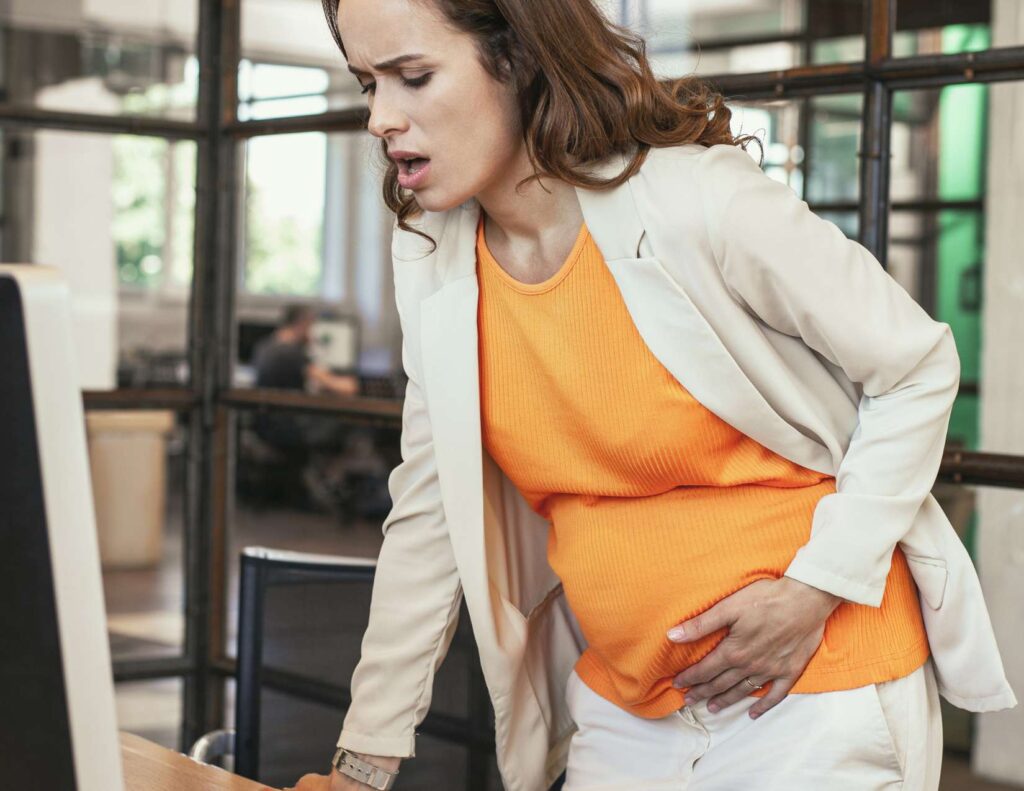
Table of Contents
Causes of Pelvic Girdle Pain During Pregnancy
Pelvic girdle pain occurs when the pelvic joints become unstable or misaligned. The weight of the growing baby can cause the pelvic bones to shift, leading to pain and discomfort. The hormone relaxin, which is produced during pregnancy, also softens the ligaments and joints in the pelvis to prepare for childbirth. However, this can also contribute to instability and pain.
Other factors that can contribute to pelvic girdle pain during pregnancy include:
- Previous injury or trauma to the pelvis
- Poor posture
- Excessive weight gain during pregnancy
- Multiple pregnancies
- Carrying a large baby
Symptoms of Pelvic Girdle Pain During Pregnancy
Pelvic girdle pain can manifest in different ways and can affect each woman differently. Some common symptoms include:
- Pain in the pelvic area, groin, hips, lower back, or thighs
- Difficulty walking, standing, or climbing stairs
- Clicking or popping sounds in the pelvis
- Pain during sex or when changing positions
- Numbness or tingling in the legs,
These symptoms may be confused with and coincide with the same symptoms of sciatica during pregnancy. If you experience any of these symptoms, it is essential to seek medical attention for proper diagnosis and treatment.

At What Stage of Pregnancy Does Pelvic Girdle Pain Start?
Pelvic girdle pain during pregnancy typically begins during the second or third trimester of pregnancy and can continue until after delivery. It is usually felt in the lower back and may be accompanied by discomfort in the hips, groin, and lower abdomen. PGP can range from mild to severe and can make it difficult to perform everyday activities. Taking steps to manage your pain is essential for getting through the remainder of your pregnancy with as little discomfort as possible.
How to Manage Pelvic Girdle Pain During Pregnancy – Tips and Tricks
There are several ways to manage pelvic girdle pain during pregnancy. Here are some tips and tricks that have been proven effective:
Pelvic Girdle Pain Exercises During Pregnancy
There are several pelvic girdle pain exercises during pregnancy that can help strengthen the muscles in the pelvic area, improve stability, and reduce pain. Here are some exercises you can try:
- Kegels: Kegel exercises can help strengthen the pelvic floor muscles, which can provide support for the pelvis. To perform Kegels, tighten your pelvic muscles as if you are trying to stop urinating. Hold for a few seconds, then release and repeat.
- Pelvic Tilt: Lie on your back with your knees bent, feet flat on the floor. Tighten your stomach muscles and tilt your pelvis upward. Hold for a few seconds, then release and repeat.
- Hip Circles: Stand with your feet shoulder-width apart and your hands on your hips. Make circular motions with your hips in both directions. *You can also perform this while sitting on the ball as shown in the image below. These were one of my favorite pregnancy ball exercises during pregnancy because it gave me so much relief!
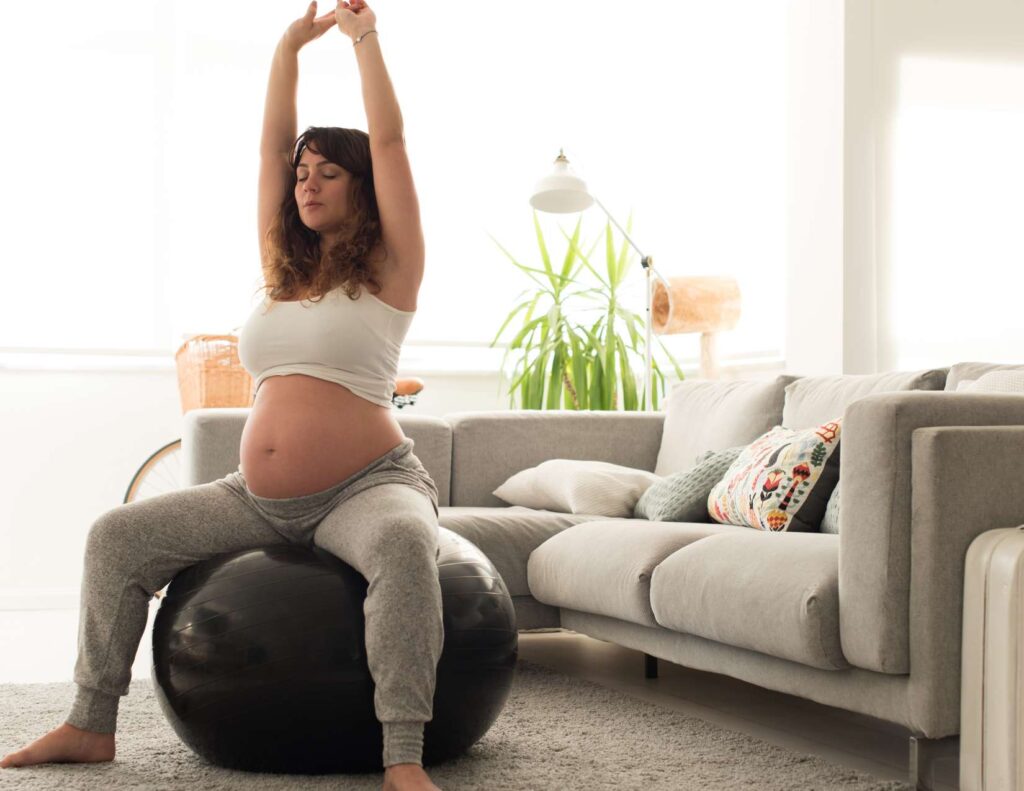
Pelvic Girdle Pain Treatment Options During Pregnancy
There are several treatment options available for pelvic girdle pain. Here are some of them:
- Physical therapy: A physical therapist can recommend exercises and stretches to relieve pain and improve mobility.
- Chiropractic care: A chiropractor can perform adjustments to the pelvis to realign the joints and reduce pain. There are many other benefits to chiropractic care during pregnancy that include reducing back pain, sciatica and joint pain. Chiropractic care can help with misalignments that occur during pregnancy due to the weight of the baby. It can also promote a healthy pregnancy and delivery as it relaxes the muscles, optimizes pelvic alignment and reduces labor time.
- Massage therapy: Massage, in the form of pressure point therapy for sciatica and other pelvic pain can help reduce muscle tension and improve circulation, which can alleviate pain.
- Acupuncture: Studies have shown that along with exercises for PGP, evidence is increasing that acupuncture reduces pelvic girdle pain by stimulating the body’s natural painkillers.
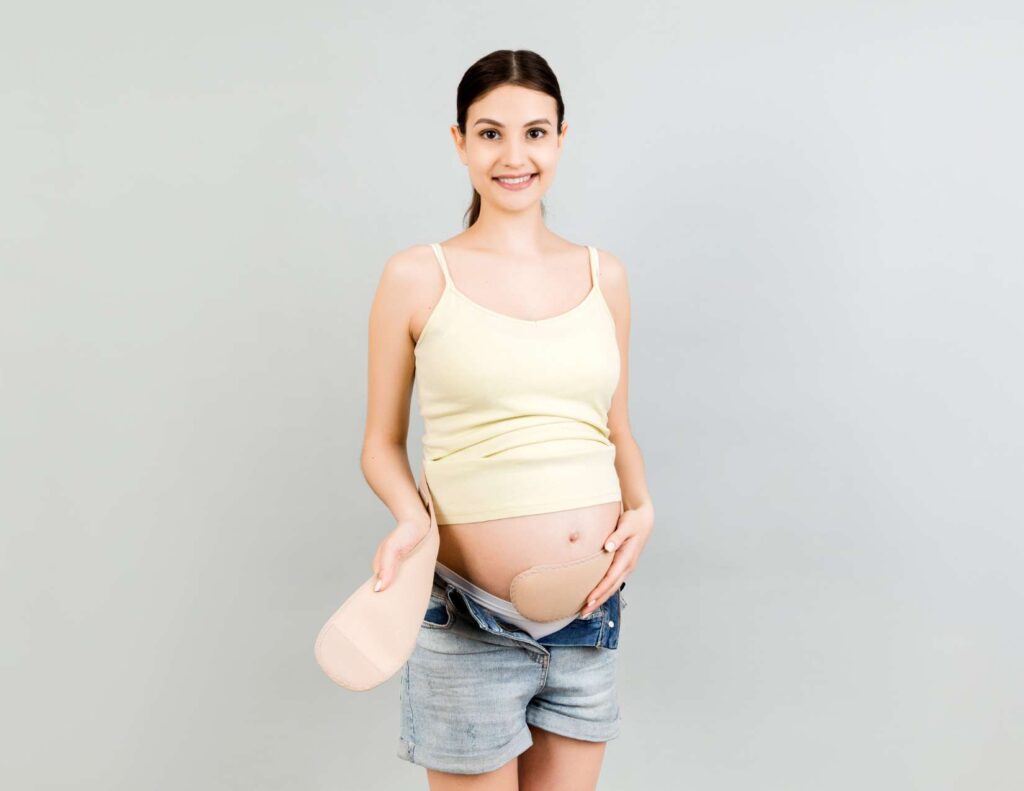
Pelvic Support Belts for Pelvic Girdle Pain
Wearing a pelvic support belt or a hip and back brace for sciatica can provide additional support to the pelvis and reduce pain. These belts are designed to wrap around the hips and support the pelvis. They can be worn during daily activities such as walking, standing, or sitting. A support belt made a huge difference in pain and support when I wore one throughout my pregnancies.
Sleeping Tips for Pelvic Girdle Pain Relief During Pregnancy
Sleeping can be particularly challenging for women with pelvic girdle pain. Here are some tips to help you sleep better:
- Use a pregnancy pillow: A pregnancy pillow can help support your belly and reduce pressure on the pelvis.
- Sleep on your side: Sleeping on your side can help reduce pressure on the pelvis. Place a pillow between your knees for additional support.
- Avoid sleeping on your back: Sleeping on your back can exacerbate pelvic girdle pain.
Can PGP Cause Early Labor?
PGP can potentially lead to the baby being born early, but it isn’t necessarily the direct cause of preterm labor. PGP is often associated with pain in the pelvic area, and in many cases this pain can be so severe that it causes a woman to go into early labor. However, PGP doesn’t always cause preterm labor and there are many other factors that could be responsible for a woman going into early labor. It is important for expectant mothers to speak with their doctor if they experience any pelvic pain, as immediate treatment may help lessen the chance of premature delivery.
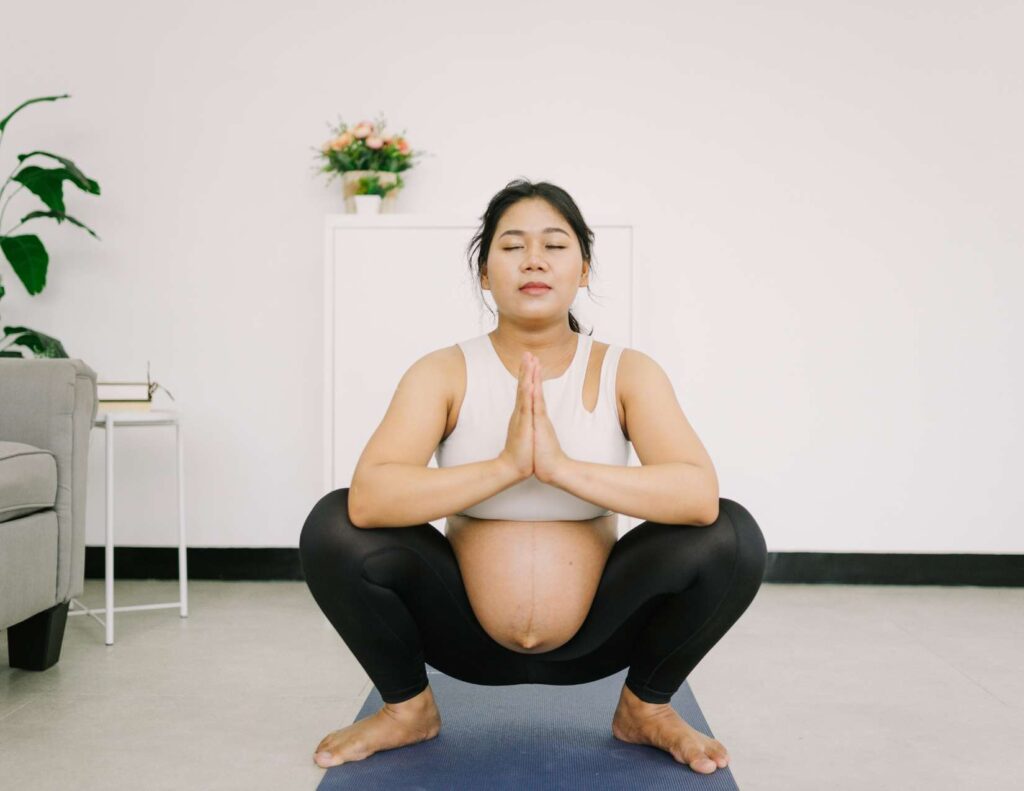
Preventing Pelvic Girdle Pain Relief During Pregnancy At Home
Prevention is always better than cure. Here are some tips to prevent pelvic girdle pain during pregnancy:
- Maintain good posture: Good posture can help reduce pressure on the pelvis. Keep your shoulders back, and your back straight when standing or sitting.
- Avoid standing or sitting for long periods: Try to take breaks and walk around every 30 minutes. If you have to sit for long periods, use a cushion to reduce pressure on the pelvis.
- Wear comfortable shoes: High heels can exacerbate pelvic girdle pain. It’s especially important to wear comfortable shoes throughout pregnancy that has good arch support.
- Avoid heavy lifting: Lifting heavy objects can strain the pelvis. If you have to lift something, bend your knees and keep your back straight.
Conclusion – Seeking Medical Attention for Pelvic Girdle Pain During Pregnancy
Pelvic girdle pain can be a challenging condition to manage during pregnancy. However, with the right management techniques, it is possible to reduce pain and discomfort. It is essential to seek medical attention if you experience any symptoms of pelvic girdle pain. Your healthcare provider can recommend the best treatment options for your specific condition.
I hope these tips and tricks will give you the pelvic girdle pain relief during pregnancy that you need. Remember, self-care is essential during pregnancy, and taking care of yourself will benefit both you and your growing baby!
